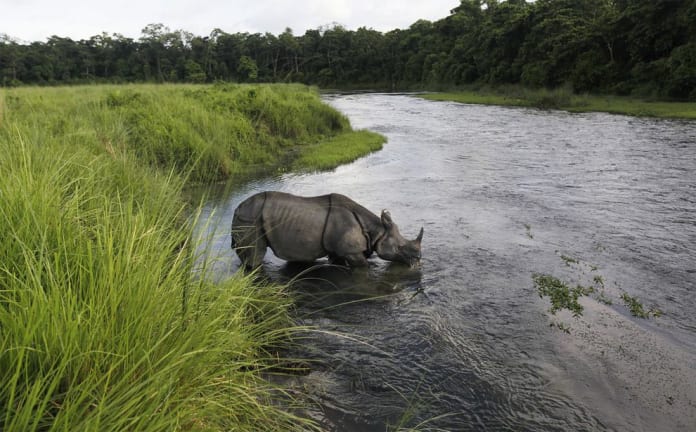Government of Nepal and World Wildlife Federation (WWF) are hosting an Anti-poaching summit in Kathmandu on 2nd February as Nepal has successfully managed to cut poaching incidents 100% since 2010. Nepal shares this remarkable achievement with India as India has managed to increase tiger numbers by a staggering 30% in the past 5 years.
Nepal and India, with their subtropical temperatures are ideal as the Royal Bengal Tiger’s habitat. There was a time when the villagers used to kill every tiger to be spotted near the village while now, they have declared themselves the protectors of this endangered species.
Nepal has managed this success for the past decade with the initiative by government of Nepal to convince villagers to inform on poachers and pay them half of tourism revenues. Now, it is not just the revenue for the villagers in Nepal. It’s a matter of national prestige and the love for nature and its creations.
Hundreds of young volunteers act as unofficial guards for Nepal’s national parks, home to 198 tigers and 534 rhinos — both listed as critically endangered species by WWF.
The last incident of poaching in Nepal was in 2012 when the villagers tipped off the police about a poaching in progress which led to the arrest of 4 poachers in the area. This incident also proved that protecting endangered wildlife is not possible with just the effort of few environmental organizations and conservationists. The local villagers all need to rise up to the occasion to save the wildlife in the area. The duty and the power to stop poaching needs to be given to the local volunteers who do the actual guarding and hunting for the hunters, rather than the conservationists who pour in money from their pockets. The feet guarding the wildlife need to be the feet that have lived there.
The five-day anti-poaching summit, which opens Monday evening, will see experts and officials from 13 countries meet to launch an Asia-wide push to fight wildlife crime.
Countries with tiger populations — Bangladesh, Bhutan, China, Cambodia, India, Indonesia, Laos, Malaysia, Myanmar, Nepal, Russia, Thailand and Vietnam — in 2010 launched a plan to double their numbers by 2022 which seems to be going at a slow but steady pace.
A good news indeed for animals in Nepal. What do you say?
Photo Credits: GEMUNU AMARASINGHE, AP
















[…] Even though 3 adult tigers were found dead in the past 6 months, all of them died of natural causes. Also, Nepal has successfully managed zero poaching in the past 4 years. […]
[…] Even though 3 adult tigers were found dead in the past 6 months, all of them died of natural causes. Also, Nepal has successfully managed zero poaching in the past 4 years. […]
Comments are closed.